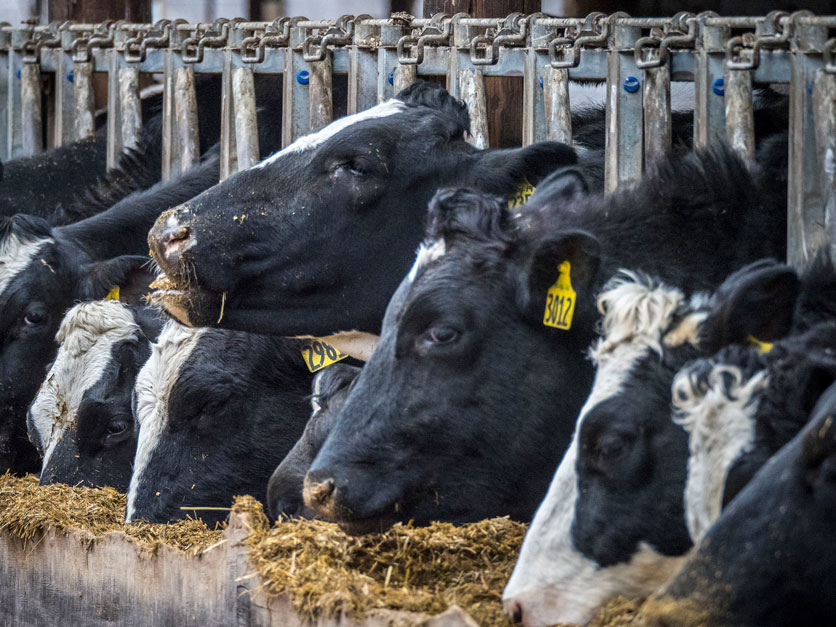Dairy farmers considering whether to sign up for the new farm bill benefits should consider this: Milk prices are likely to remain relatively stagnant for several years due in part to consolidation that left large farms less responsive to market signals.
Scott Brown, an economist at the University of Missouri, told a House Agriculture subcommittee on Tuesday that farmers who decide not to sign up for the new Dairy Margin Coverage program in the 2018 farm bill could find themselves at a significant disadvantage to other producers.
“Dairy producers, regardless of size, must examine how the DMC program fits into their overall risk management plan,” he said.
Milk production slipped in March by 0.4 percent from the previous year, the first year-over-year decline since January 2016, excluding the leap year effects, Brown said. If the decline continues, milk prices could strengthen later in the year, but the industry consolidation increases the likelihood of “these longer periods of low profitability occurring in the future,” Brown said.
The economies of scale enjoyed by ever larger farms, plus the equity that farms built up when prices were high in 2014, “has left aggregate milk supplies very unresponsive in time periods that are financially stressed," he said.
USDA’s Farm Service Agency on Tuesday announced a new online decision tool for DMC to help producers estimate the payments they would receive under the program, an overhauled version of the relatively unpopular Margin Protection Program created by the 2014 farm bill.

Scott Brown, University of Missouri
FSA soon will begin notifying producers about the availability of partial refunds of fees they paid under MPP. Producers can get 75 percent of the fees refunded if they apply them toward fees for DMC. Producers who elect to get the refunds in cash can get half what they paid for MPP coverage.
DMC benefits are targeted to producers with up to 5 million pounds of production, or about 240 cows. The program is designed to ensure that producers are more likely to get payments and pay less in premiums than they did under MPP. Fees were lowered and the top coverage level was raised from $8 per hundred pounds to $9.50.
But House Agriculture Chairman Collin Peterson, D-Minn., expressed concern that using USDA’s decision tool could lead producers to buy coverage at levels lower than $9.50.
“In my opinion there is no question about what to do,” Peterson said. “Unless you are wealthy … you should take $9.50, you should take it for five years, and lock it in. If you don’t, don’t complain to me.”
According to the FSA decision tool, there is a 100 percent probability a farmer covering 5 million pounds would get a net benefit from DMC in 2019 at the $9 and $9.50 coverage levels, given current price projections. The probability of a net benefit (total payments minus premiums) in 2019 drops to 9 percent at $8.50 coverage.
Projecting out even further, Brown estimates producers will get DMC payments 56 percent of the time over the next 10 years if they sign up at the $9.50 level.
Sign-up for the program is expected to start June 17 with the first payments to go out in July.
DMC “will help us mitigate risk and secure a profit going forward,” Sadie Frericks, a Minnesota producer who has 90 cows, told the lawmakers. “We will continue working together, with our children, to care for our cows and our land.”
She told Peterson she plans to enroll in DMC for the full five years at the $9.50 coverage level. “You’re on the ball,” Peterson replied.

House Ag Chair Collin Peterson, D-Minn.
But Frericks said later that even though the coverage will be retroactive to Jan. 1, many producers will be hard-pressed to wait until July for payments,
Andrei Mikhalevsky, president and CEO of California Dairies Inc., one of the nation’s largest farmer-owned cooperatives, said DMC would provide limited benefit to his members, since their average farm size is 1,400 cows. “It would be really nice at some point to open that up a little bit farther for the larger dairies,” he said.
But he said his members were “highly enthusiastic” about the new dairy revenue protection insurance policies that went on sale last year with USDA’s approval.
He said that retaliatory tariffs imposed on U.S. milk products by Mexico and China last year stymied a much-needed rebound in milk prices.
Slow domestic demand for fluid milk also is weighing on prices, according to Brown. Per capita consumption of 2 percent low-fat milk declined by 33 pounds between 2010 and 2018 and hasn’t been offset by increases in whole milk consumption, he said.
Both USDA and the University of Missouri’s Food and Agriculture Policy Research Institute project milk prices won’t exceed $18 per hundred pounds on an annual basis until after 2022, meaning there will only be a “slow recovery” in milk prices “over the next three to four years barring some external, unanticipated shock.”
For more news, go to www.Agri-Pulse.com.


